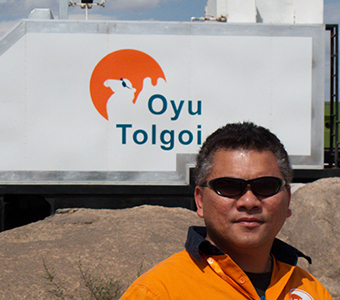Water disputes persist as Rio Tinto pushes ahead with second Oyu Tolgoi mine
Prague; Khanbogd Soum, Mongolia – A large new copper mine in Mongolia could cause irreversible damage to terrain and deprive water from some of the world’s last remaining nomadic herding groups, finds a new report released today by Oyu Tolgoi Watch, the Bank Information Center, CEE Bankwatch Network and Accountability Counsel.
11 February 2016

Prague; Khanbogd Soum, Mongolia – A large new copper mine in Mongolia could cause irreversible damage to terrain and deprive water from some of the world’s last remaining nomadic herding groups, finds a new report released today by Oyu Tolgoi Watch, the Bank Information Center, CEE Bankwatch Network and Accountability Counsel.
DOWNLOAD THE REPORT:
Full report Oyu Tolgoi Phase 2: Plans, Issues and Risks – Download pdf (7 MB)
8-page summary – Download pdf
Developed by Rio Tinto, a global mining giant, the US $6.7 billion Oyu Tolgoi Phase 2 project in the Gobi desert is designed to tap the world’s largest undeveloped copper deposit. Pre-construction works for the underground mine have already commenced, but the company has so far made little if any information on the expected environmental impacts publicly available, according to the report Oyu Tolgoi Phase 2: Plans, Issues and Risks.
Planned as an expansion to existing operations, the Oyu Tolgoi (OT) project includes an open pit mine that has already diminished water access and water quality, reduced pasture area, and made traditional nomadic herding livelihoods in the area all but impossible to maintain.
The project will receive US $4.4 billion in international financing, including from the International Finance Corporation (IFC), the Netherlands Development Finance Company (FMO), and via the largest syndicated loan ever by the European Bank for Reconstruction and Development (EBRD).
The report, compiled by mining and environmental expert Paul Robinson at the Southwest Research and Information Center, summarises the expected impacts from the underground mine. The planned block cave mining method is expected to cause surface land to subside by 65 feet or more across a zone of nearly 5 square miles, leaving the affected land permanently unusable and beyond the scope of any remediation technology.
Publicly available documents do not identify enough water supplies to sustain the 40-year mine life without depleting the water supplies that herders depend on. Meanwhile, a new coal-fired power plant being considered to power the mine would cause further harms that as yet have not been identified by any environmental assessment.
Local people have been engaged in an ongoing dialogue with the project company since 2013 to discuss disputes over water resources, resettlement and compensation related to the existing OT open pit mine. The process still has not led to a final agreement resolving the dispute, yet Rio Tinto is charging ahead with its plans to develop the new underground mine.
Communities who have already experienced severe impacts from the open pit mine now face further harm from the underground expansion, the extent of which remains unclear.
“The herders have not been given up to date project plans, nor have they been properly consulted about the underground mine, even though information disclosure and informed consultation with local people are required by the project’s international financiers,” explained Sukhgerel Dugersuren, Executive Director of OT Watch, who is assisting herders in the complaint process.
The findings of the report and the stark realities of herders who have had to abandon their traditional livelihoods fly in the face of a Project Finance International award given last week, which dubbed the OT project “Mining Deal of the Year in the Asia-Pacific region”.
“OT is accepting accolades for this project while the problems they have caused for local herders remain unresolved,” said Dugersuren. “The mine is touted for its so-called development benefits, but this is meaningless without a strong commitment from Rio Tinto to address impacts of the new expansion and disclose information to the affected herders.”
Notes for editors:
The full report, Oyu Tolgoi Phase 2: Plans, Issues and Risks, is available at:
https://bankwatch.org/sites/default/files/OyuTolgoi-Phase2.pdf
An 8-page summary is also available at:
https://bankwatch.org/sites/default/files/OyuTolgoi-Phase2-summary.pdf.
For more information please contact:
Sukhgerel Dugersuren
Executive Director, Oyu Tolgoi Watch
+976 99185828
otwatch@gmail.com
Fidanka Bacheva-McGrath
EBRD Campaign Coordinator, CEE Bankwatch Network
+359 877303097
fidankab@bankwatch.org
Paul Robinson
Research Director, Southwest Research and Information Center
+1 505 262 1862
sricpaul@earthlink.net
Caitlin Daniel
Acting Director of Strategic Support, Accountability Counsel
+1 415 500 8214
caitlin@accountabilitycounsel.org
Sarah McNeal
Asia Program Associate, Bank Information Center
+1 202 624 0635
smcneal@bankinformationcenter.org
Never miss an update
We expose the risks of international public finance and bring critical updates from the ground – straight to your inbox.
Institution: EBRD | World Bank Group
Theme: Social & economic impacts
Location: Mongolia
Project: Mining boom in Mongolia
Tags: Oyu Tolgoi | copper | mining
